Dior - Women's Fashion - Fall-Winter 2018-19
Luxferity, 10.10.2018
HAUTE COUTURE
“Curiously, perhaps, it is the inherent disorderliness of desire and subjectivity that makes both Lacanian psychoanalysis and avant-garde art so remarkably radical, and renders them both ideal for a negotiation of the bizarre creations of couture,” Alison Bancroft*
Is it possible to celebrate haute couture while also offering a critical reading of it? Is it possible to stay faithful to the strict rules decreed by the Chambre Syndicale de la Haute Couture** while breaking them down to create a new order?
These are the questions that Maria Grazia Chiuri raises in this autumn-winter 2018-2019 haute couture collection and following the exhibition “Christian Dior: Designer of Dreams”, at the Musée des Arts Décoratifs, which, by placing the spotlight on the haute couture creations, paid tribute to the sacred and timeless place that is the atelier.
The ateliers are temples, guardians of thought and ideas. It is at the heart of this notion of couture – with its series of images, shapes, colors and moods – that the creative vision of Maria Grazia Chiuri unfolds. Couture is an example of the avant-garde, an art form that develops through imagination. A reflection that cultivates the boldness to repeating codified gestures while seeking to challenge and overturn them. Because couture today is, above all, a conceptual gesture. Like a Marcel Duchamp ready-made.
Sometimes it’s the fabrics that take the lead, produced in age-old mills that can only weave a few meters at a time and which have been tasked with introducing an unusual element or a new aspect of savoirfaire, each material capable of undergoing modifications to unexpectedly accentuate its effect. At other times, the initial idea comes from the desire to redefine the ritual and manner of dressing according to the various times and occasions that punctuate a day. Haute couture offers the opportunity to wear a quality that’s unique, to adapt a perfect work to one’s own body. Maria Grazia Chiuri returns to the fundamentals and designs suits in which the Bar jacket develops batwing sleeves. The real transgression lies in referring to the rules for use while twisting their syntax.
The powdery palette (brick, green, pink and orange), interacting with nude, colors the clothes but also the accessories – refined costume jewelry, veil and hats – in a complementary continuity of the body on which couture places the emphasis. Evening dresses, rendered dazzling by their mix of pleating and layering, contrast with simple bustiers which offer a surprising dissonance. The sculptural form of a red silk dress sewn from a single piece of fabric opens the way to a series of majestic and intimate creations, both restrained and explosive: couture, in the process, becoming a psychological place of female resistance.
Alison Bancroft, in a Lacanian sense, equates couture with the mode of expression of the avant-garde movements: reappropriation of secular practices rejected in a desire for newness and reinterpretation of traditions through contemporary values. It is through this encounter between a system of established rules and the freest creativity that, for Maria Grazia Chiuri, couture becomes akin to rebellion: a kind of ideological “guerrilla” that explodes on the frontiers of entrenched tradition, without ever overstepping them.
* Inspiring Desire: Lacan, Couture, and the Avant-garde, Fashion Theory.
** “ The original models are created exclusively by the head of the house or its permanent sample makers; (...) they are produced only in its own ateliers...”
Definition offered by Didier Grumbach in Dictionnaire de la Mode au XXe Siècle (Editions du Regard, Paris, 1994).
Courtesy of Dior












